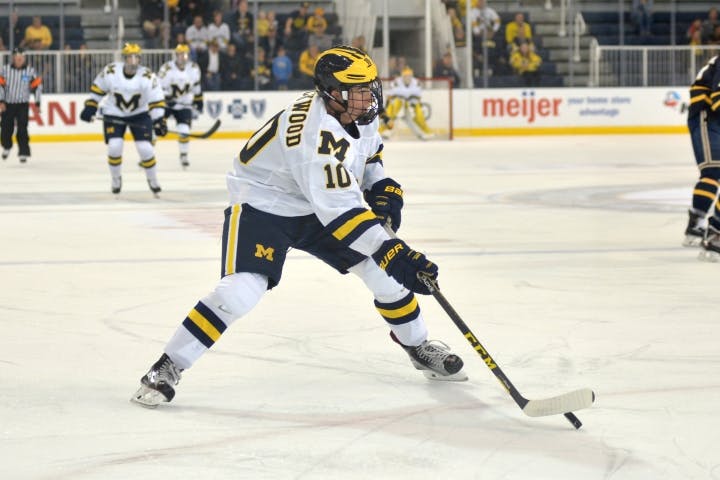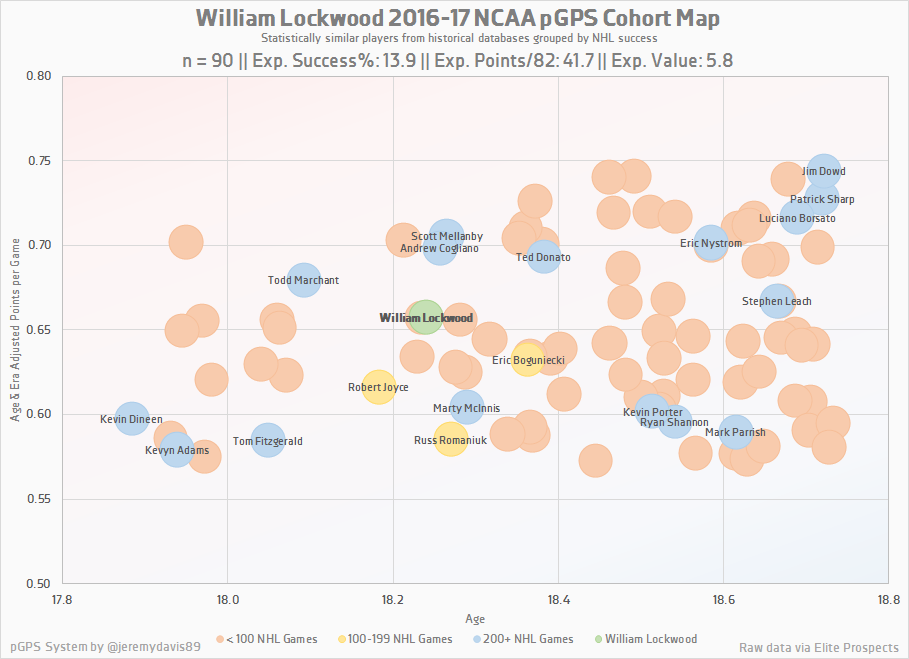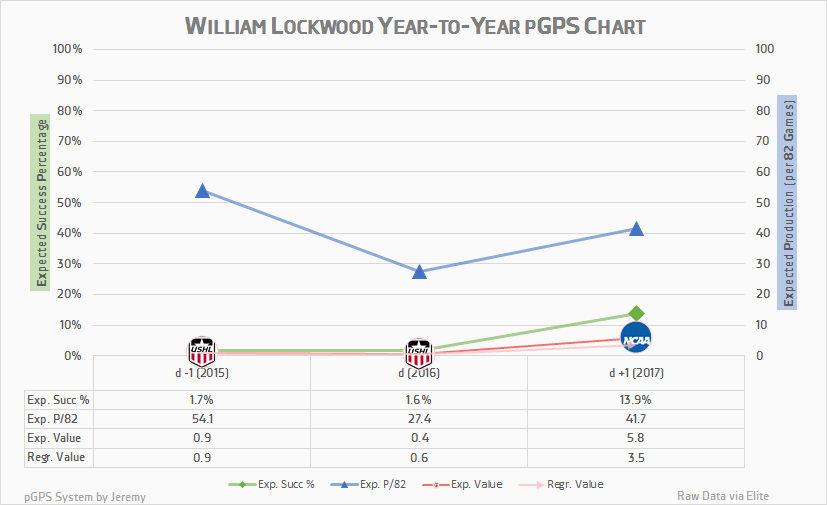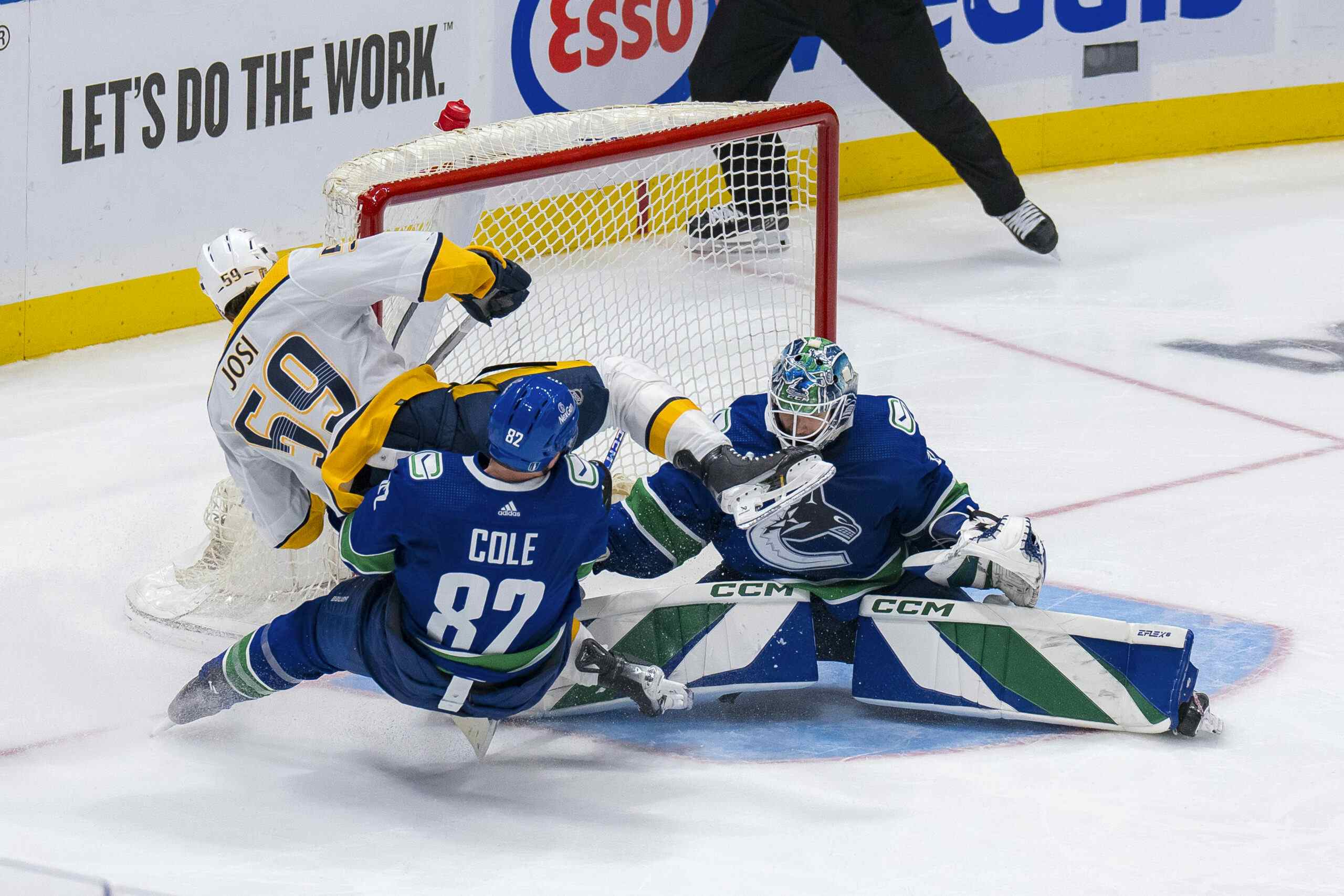Canucks Army Pre-Season Prospect Profile #12 – Will Lockwood

By J.D. Burke
6 years agoWill Lockwood might not have been the best value play when the Vancouver Canucks selected him 64th overall in the 2016 NHL Entry Draft, and he almost certainly won’t prove himself to be the best player that was available to them, but he’s a legitimate NHL prospect. I don’t think we could have said that with any confidence at this time a year ago.
Clearly, the Canucks saw something in Lockwood that most didn’t — like with Adam Gaudette a year prior — and the early returns on the undersized but hard-nosed American winger are promising to say the least. The company line was that Lockwood had so much more to deliver offensively than his paltry counting stats on the stacked United States National Team Development Program suggested in his draft year. It turns out they had it right. The University of Michigan was able to offer Lockwood a role near the top of their lineup, and he produced in a more challenging league against more physically developed players. Funny, that.
We knew Lockwood could hold his own defensively. What we couldn’t anticipate was that he’d score enough to maintain any kind of relevance as an NHL prospect. Now, Lockwood looks every bit the Jannik Hansen comparison he drew on his draft day.
Qualifications
We’ve changed the qualifications up just a little bit this year. Being under the age of 25 is still mandatory (as of the coming September 15th), but instead of Calder Trophy rules, we’re just requiring players to have played less than 25 games in the NHL (essentially ignoring the Calder Trophy’s rule about playing more than six games in multiple seasons).
Graduates from this time last year include Brendan Gaunce, Troy Stecher, and Nikita Tryamkin, while Anton Rodin is simply too old now, and Jake Virtanen is not being considered solely as a result of his games played.
Scouting Report
Failed to load video.
I took the time to read some scouting reports from just before the 2016 NHL Entry Draft to get a better sense of what talent evaluators thought at the time of Lockwood. I wanted to know what was holding him back from producing more, and whether the community anticipated those issues correcting themselves, and so on. Everyone seemed to agree that there were physical tools inherent in Lockwood’s game that should have lent themselves to better offensive outputs than what he’d shown on his path to the draft. So, what was holding him back from seasons like the one he just enjoyed in the NCAA? Hockey sense.
All the tools in the world won’t do you any good if you haven’t a clue how to use him. Under the watchful eye of Wolverines head coach Red Berenson, Lockwood seems to have refined his game in a way that leads to sustained offence. As Jeremy Davis noted in his excellent mid-season profile, Lockwood (in an admittedly small sample) is using his speed to push play in the neutral zone with controlled entries at the highest rate on his entire team. A testament to Lockwood’s defensive commitment, he led all Wolverines forwards in controlled zone exits as well — he wasn’t flying the zone or cheating to create offence.
One thing Lockwood’s always done well is apply his speed in puck retrieval. Canucks general manager Jim Benning’s comparison to Hansen holds up especially well in this light. Lockwood can close space in the blink of an eye, and in spite of his underwhelming 5’11” frame, he isn’t afraid to get physical to separate the opposition from the puck. In fact, Benning told The Province’s Jason Botchford in his prospect profile that one concern the Canucks have about Lockwood is his fearlessness. If Lockwood’s going to survive the NHL grind, he’s going to have to be more judicious when lining up players for shoulder checks into the board. On a perhaps related note, Lockwood underwent successful shoulder surgery this off-season.
Going into his sophomore season, there isn’t much left on Lockwood’s NCAA checklist. He’s already a top line player, a power play producer and a key contributor to his team’s penalty kill. The next big challenge will come this winter when Lockwood is likely to make to the American team for the World Junior Hockey Championships. Lockwood was at their development camp this summer and practiced with the team, but ultimately his recovery from shoulder surgery kept him from exhibition game action; he’s saving it all for the show in December.

When we view Lockwood’s last season through the pGPS lens, he carries a 13.9% Exp. Success rate and an Exp. Points per 82 games of 41.7. It’s not much, but it’s a significant step ahead of the 1.6% rate his draft season carried in a considerably larger sample.

Expectations will have to remain reasonable. Lockwood’s ceiling is likely still that of a third-line checking forward who can chip in with the odd goal. A big part of what’s made Lockwood’s first season so great are the expectations he’s shattered along the way. The odds are still stacked against Lockwood. That’s the case with most prospects, though.
Recent articles from J.D. Burke





